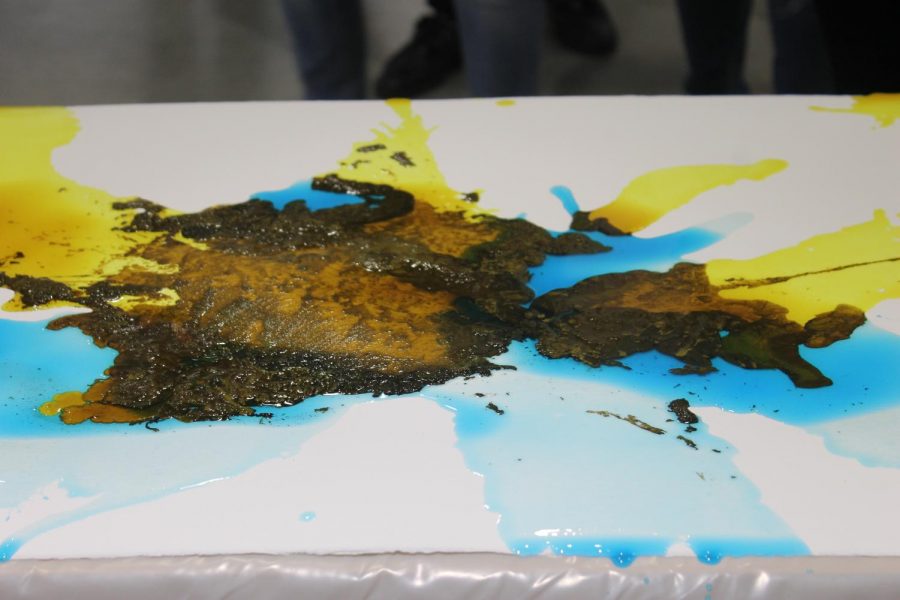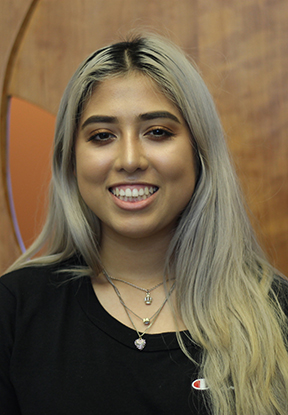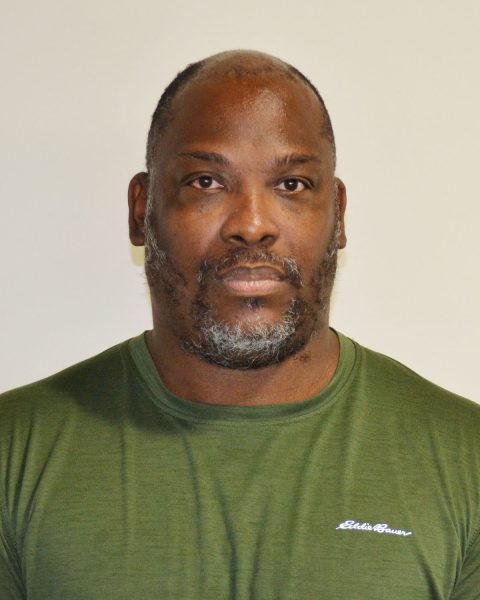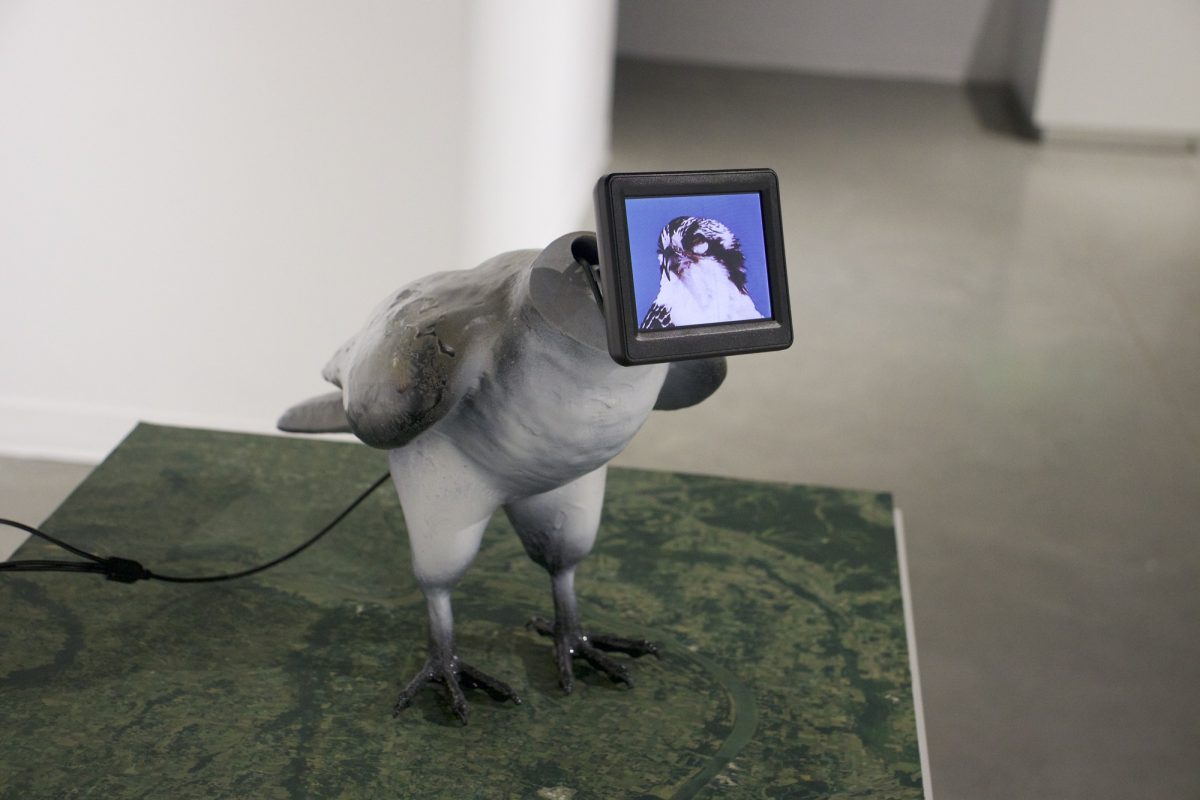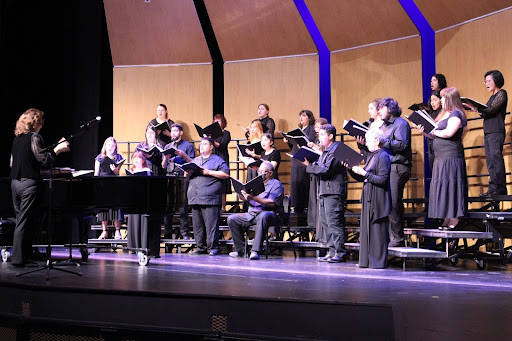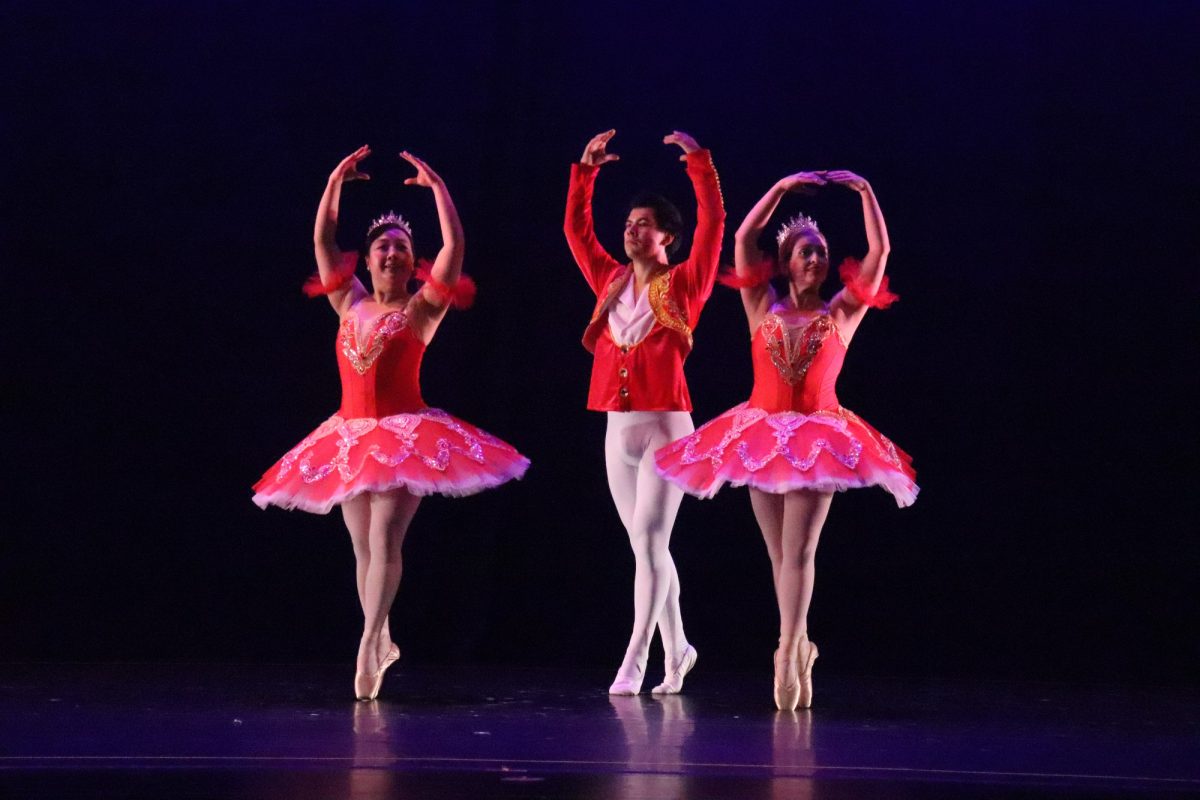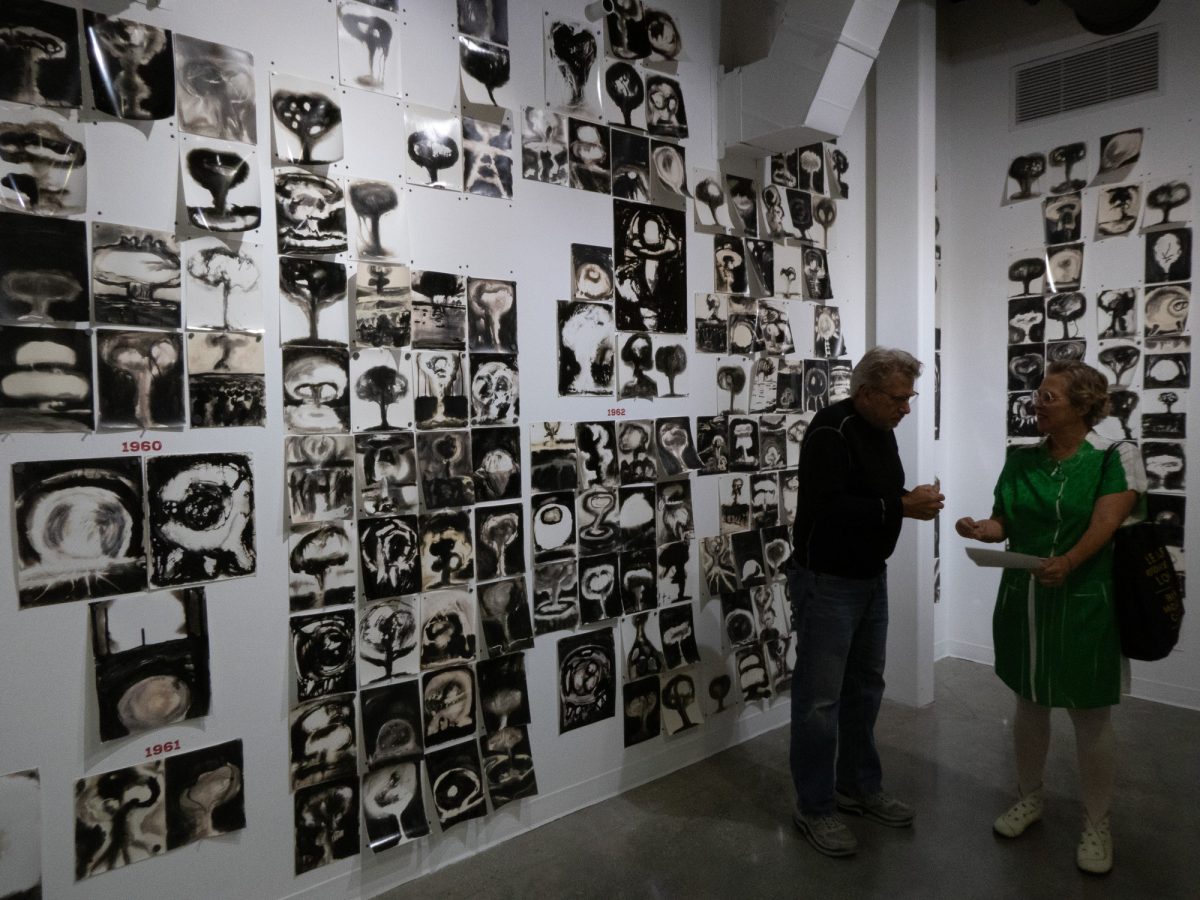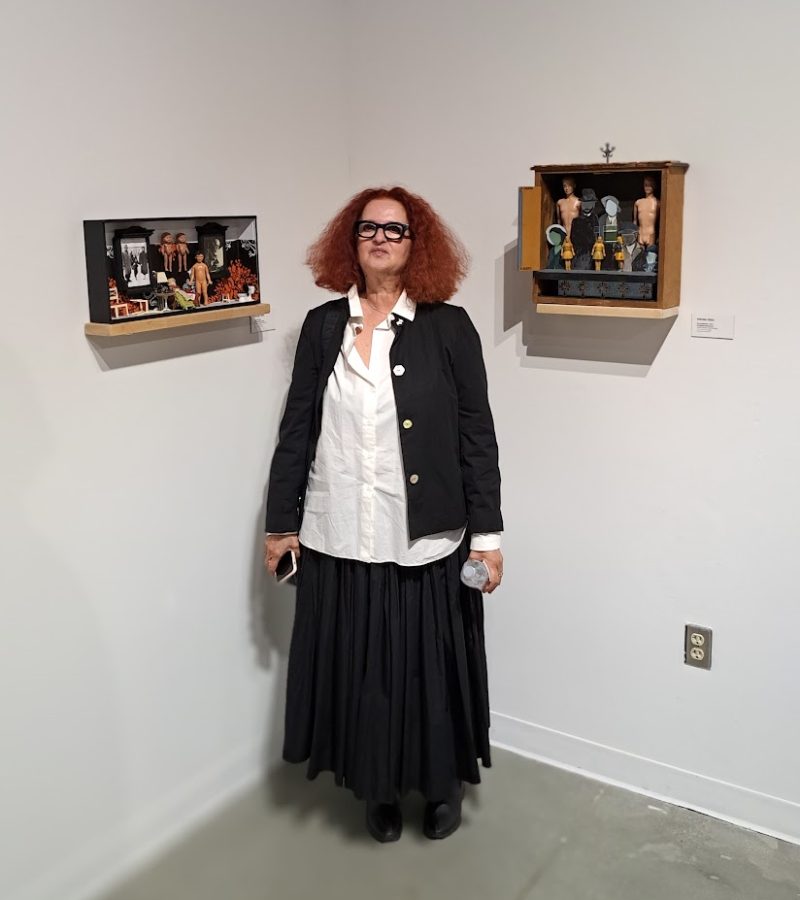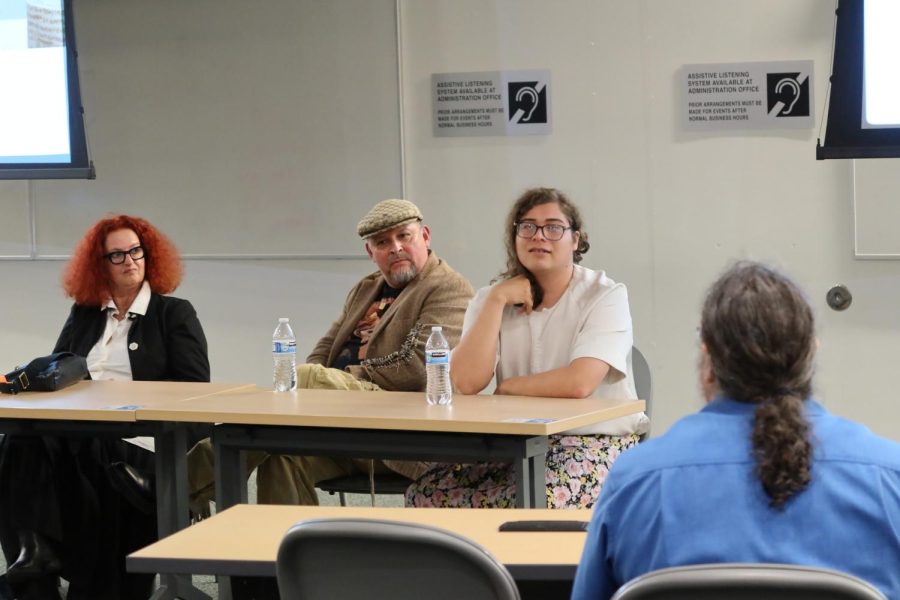A panel was held on Sept. 24 emphasizing the theme of the Cerritos College art gallery’s current exhibit: Geo-Ontological: Deep Time.
In order for the audience to get a full understanding of the message behind the theme of the gallery, Professor James MacDevitt invited four artists and a geologist to the panel to discuss the meaning behind the pieces and its connection to geology.
Each artist went to the podium to share their creativity, beginning with Virginia Katz whose geological approach was to use acrylic paints and water colors focusing on natural form.
“After spending a lot of time on location, I started to appreciate it, as if it was some sort of penetration into what took place around me,” explained Katz when asked about what started her passion for this kind of art.
Katz further went into the construction of each of her pieces she has worked on using weather pattern. She introduced one method in which she used twigs and branches as a ‘brush’ that was covered in paint, attached to a paper. Depending on the wind currents, the ‘brush’ would move in every which way.
Panelist Chris Hanke said his main goal in his constructive work was to inform the audience of the past.
When asked what inspired him to include a geological theme to his projects, his response was, “where are multiple reasons, but my top one would be it is sort of like the most basic example of an en-tropic form.”
He continued to comment that this form held a poetic beauty when at the same time it was a reminder of our own tropic conditions.
Hanke introduced a nuclear themed exhibit he held in which he relates geological time to nuclear time, mentioning that geology goes back into a time that holds an unfathomable distance.
The third in line to speak about their piece was Randy Hokett, whose passion is mineral drawings and sculptures.
She said, “I wanted to develop a body of work. So, for my first piece, I started to dig a piece of drywall at my house and I then became fascinated by the idea.”
Other guests that were also on board the panel was artist Pam Posey and geologist Nicole Bilsley, who is a member of the Cerritos College faculty.
Pam Posey’s use of geology in her art was traveling to different areas of the world and planting stones that were from different locations. Posey would then map them out in a sketch with water colors.
Reaching the Q/A segment of the panel, the artists and the geologist came to an understanding that art can be the most simplest explanation of the Earth and it’s history.
One student who wanted to stay anonymous believed that the art was created to exemplify further information through a physical approach rather than written facts and data charts. “It’s a new perspective of the world that many individuals should take the time to see.”
Once the segment was over, Hokett demonstrated an art piece that captured the evolution of crystallization.
The visible changes were to take up to a few days, so Hokett and MacDevitt provided students the opportunity to view it when attending classes.
The overall outcome of the show was profoundly admirable, and it changed the audience into becoming more open-minded.
When interviewed upon the results of the event, Professor MacDevitt said, “The show went amazing. It’s been very popular, especially with a lot of the really good feedback we’ve received from both the art program and faculty.”
MacDevitt further went into discussion on how the artists mainly focused on the ways we as humans engaged with the geological record so we are embedded in part of it.
There will be two more shows opening on Oct. 30th to Dec. 7th.
One will be known as the Polychromatic Mojo: Color as Content, as for the other, the focal point will be the retrospective of the artist residency.


